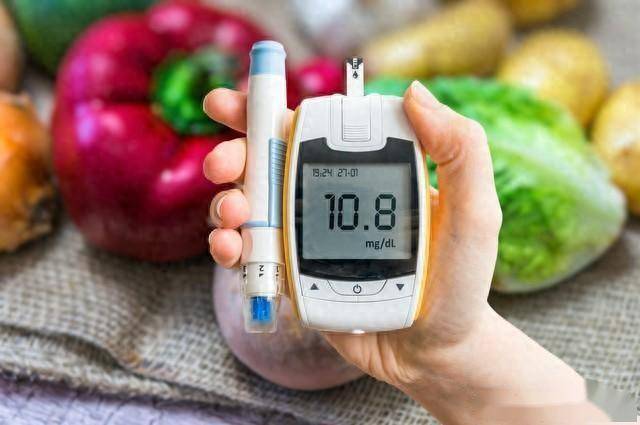Diet management for diabetes patients is one of the most important parts of daily life. Many people often ask: “Can I eat this? How much is the right amount?” Peanuts, as a common type of nut food, are often seen on our dining tables. However, for diabetes patients, is eating peanuts beneficial or detrimental? How should the intake of peanuts be adjusted in the high-temperature environment of summer? Today, we will discuss these questions in detail to help everyone better manage diabetes and enjoy a healthy life.
Nutritional Value of Peanuts
Basic Nutritional Components of Peanuts
Peanuts are rich in protein, fat, and carbohydrates, making them a high-energy food. Approximately 100 grams of peanuts contain about 25 grams of protein, 50 grams of fat, and 16 grams of carbohydrates. In addition, peanuts are rich in vitamin E, B vitamins, magnesium, copper, zinc, and other trace elements.
Health Benefits of Peanuts
The unsaturated fatty acids in peanuts help lower low-density lipoprotein (LDL) cholesterol, contributing to cardiovascular health. Its abundant antioxidants, such as resveratrol, combat free radical damage and prevent chronic diseases. Moreover, the fiber in peanuts promotes digestive system health and intestinal motility.
Can Diabetes Patients Eat Peanuts?
Glycemic Index and Diabetes of Peanuts
The Glycemic Index (GI) is a measure of how much a food raises blood sugar levels. The GI value of peanuts is around 14, categorized as a low-GI food. This means that peanuts have a minimal impact on blood sugar levels, and moderate consumption does not cause significant blood sugar fluctuations. Therefore, peanuts are suitable for diabetes patients to eat in moderation.
Healthy Fats in Peanuts
Peanuts are rich in monounsaturated and polyunsaturated fats, which help control blood sugar levels. Studies indicate that consuming healthy fats in moderation can improve insulin sensitivity, aiding diabetes patients in better blood sugar control.
Effect of Peanuts on Satiation
The high protein and fat content of peanuts give them a strong satiating effect. Consuming peanuts in moderation can help diabetes patients reduce intake of high-sugar and high-fat foods, supporting weight management and blood sugar control.
Considerations for Peanut Consumption in Summer
High Temperatures in Summer and Food Storage
Due to high summer temperatures, peanuts are prone to moisture and mold, leading to aflatoxin production. This toxin poses severe liver risks and prolonged ingestion may result in liver cancer. Therefore, when storing peanuts in summer, it’s essential to keep them dry and well-ventilated to prevent mold formation.
Recommended Moderate Peanut Intake in Summer
With higher summer temperatures increasing metabolic rates and energy expenditures, diabetes patients should moderately increase peanut consumption based on their blood sugar control. It is advised to consume peanuts not exceeding 20-30 grams per day, roughly a small handful, to avoid excessive calorie and fat intake.
Cooking Methods for Eating Peanuts in Summer
In summer, opt for cooler consumption methods like peanut salad or peanut soup to meet taste preferences and avoid the high calorie content of fried peanuts. Additionally, refrain from storing peanuts for extended periods or exposing them directly to sunlight in high-temperature environments.
Scientific Peanut Consumption for Diabetes Patients
Pairing with Other Foods
Peanuts can be paired with low-GI foods like vegetables and whole grains to create a nutritionally balanced meal. For example, mixing peanuts with greens increases fiber intake and lowers the risk of post-meal blood sugar spikes.
Controlling Peanut Intake
Although peanuts have minimal impact on blood sugar, excess consumption may lead to increased calorie intake affecting weight control. Diabetes patients should moderate their peanut intake, consuming them in appropriate amounts, not exceeding a small handful each time (about 20-30 grams).
Regular Blood Sugar Monitoring
After consuming peanuts, diabetes patients should monitor blood sugar changes to observe their specific effects on blood sugar levels. If significant blood sugar fluctuations are noticed, adjust peanut intake accordingly or opt for alternative foods.
Real Case Studies
Case 1: Mr. Wang’s Peanut Consumption Experience
Mr. Wang, a 50-year-old diabetes patient, enjoys eating peanuts. Following a nutritionist’s advice, he controls his peanut intake daily and pairs them with other low-GI foods. After some dietary adjustments, Mr. Wang achieved good blood sugar control and experienced weight loss.
Case 2: Lessons from Ms. Li’s Incorrect Peanut Consumption
Ms. Li’s excessive consumption of peanuts, leading to high calorie intake and weight gain, caused significant blood sugar fluctuations. With guidance from a nutritionist, she started moderating her peanut intake and increased blood sugar monitoring, eventually restoring normal blood sugar levels and weight.
While peanuts offer certain health benefits for diabetes patients, moderation is crucial to avoid surplus calorie intake. During summer, pay special attention to peanut storage and cooking methods to prevent mold growth and excess calorie consumption. Scientific and reasonable peanut consumption can assist diabetes patients in better blood sugar management and enjoying a healthy life.


